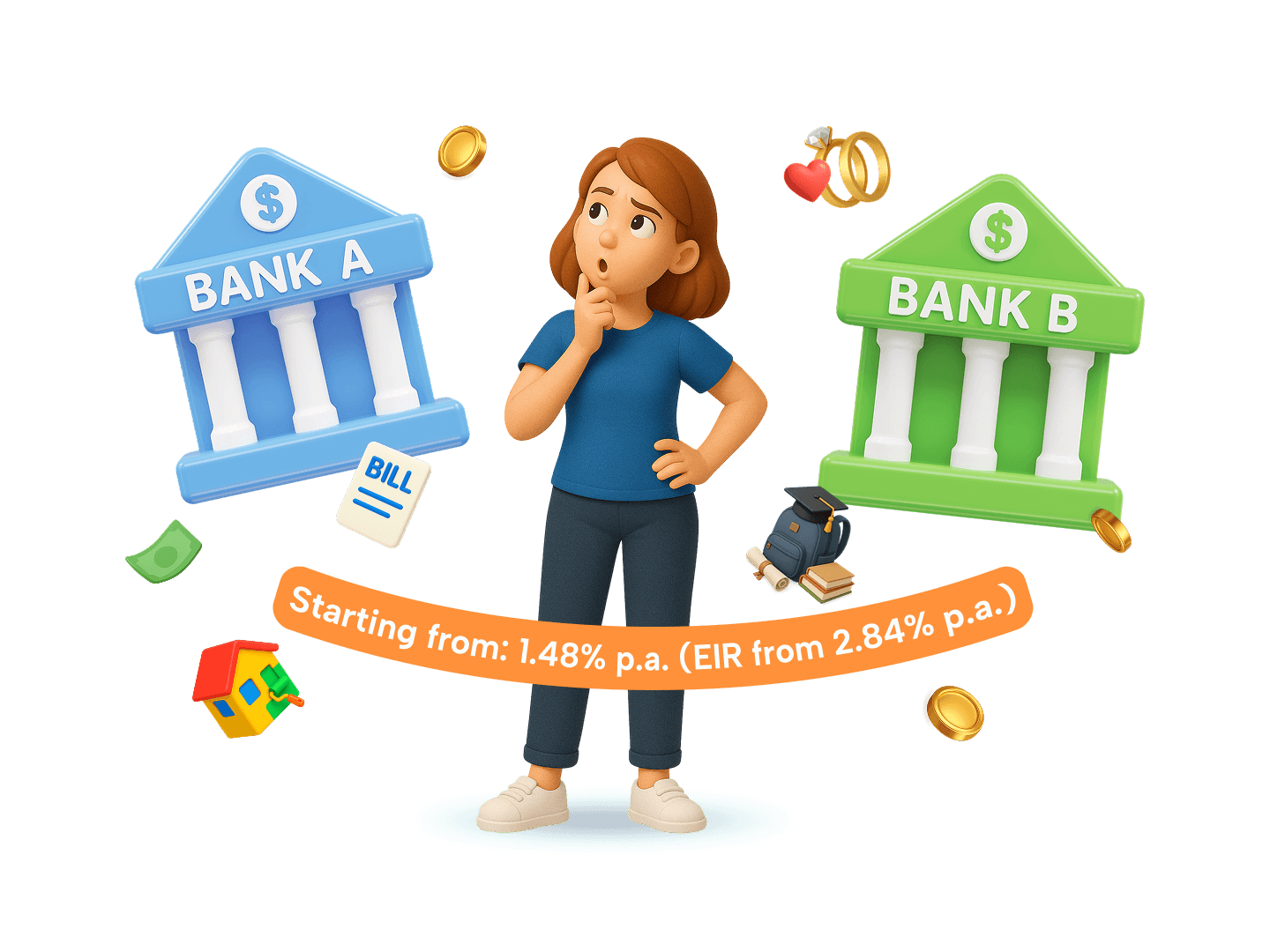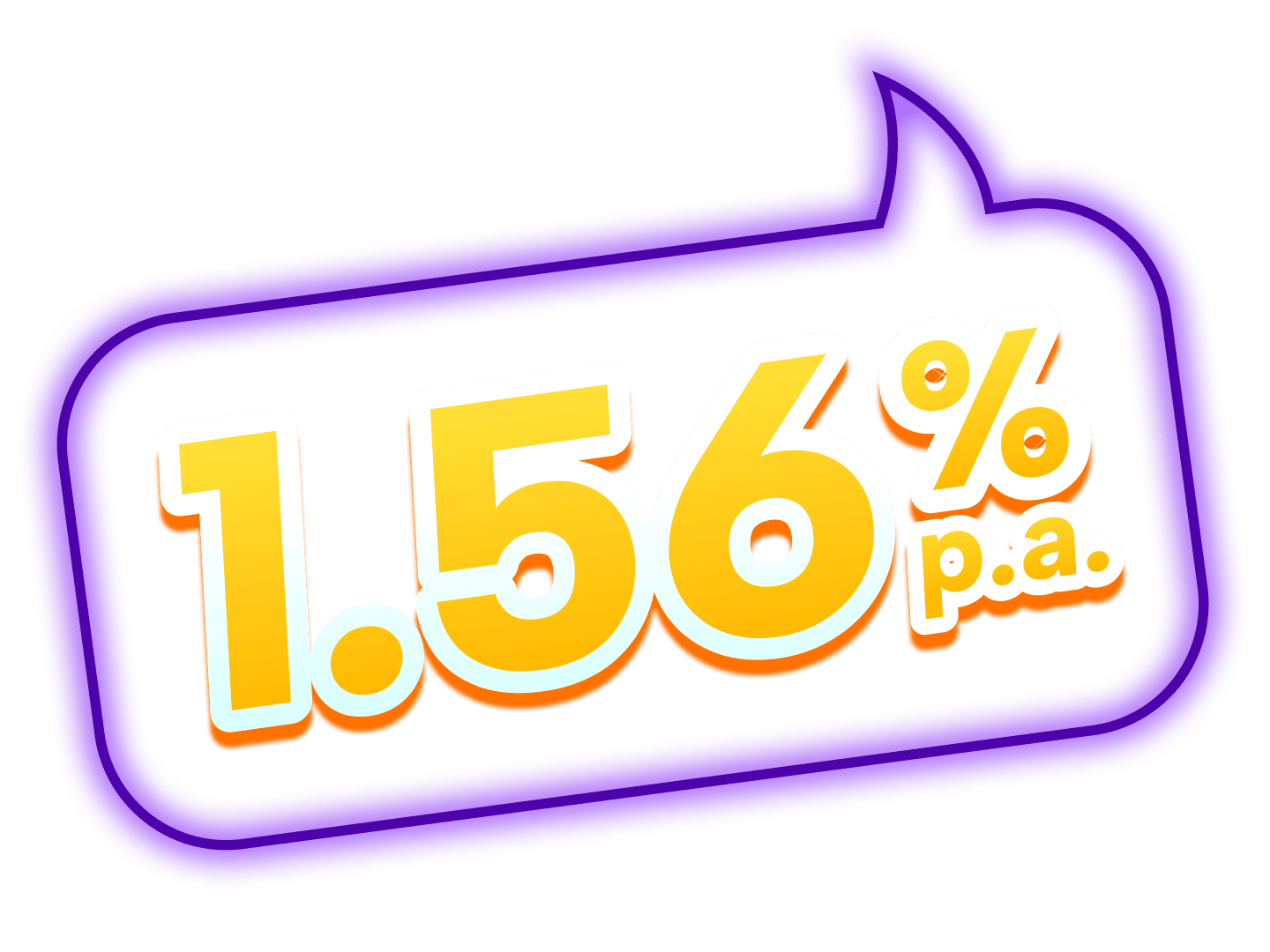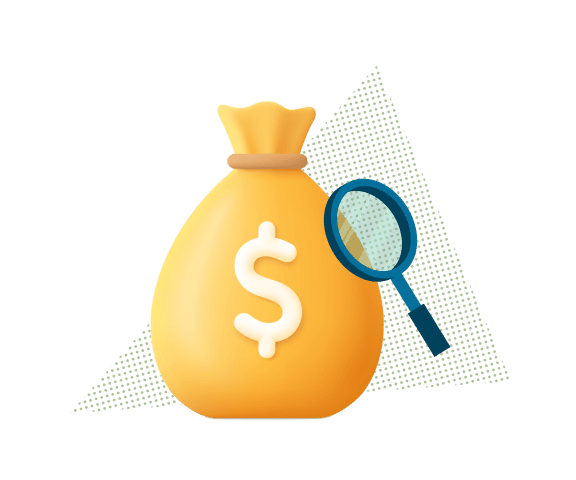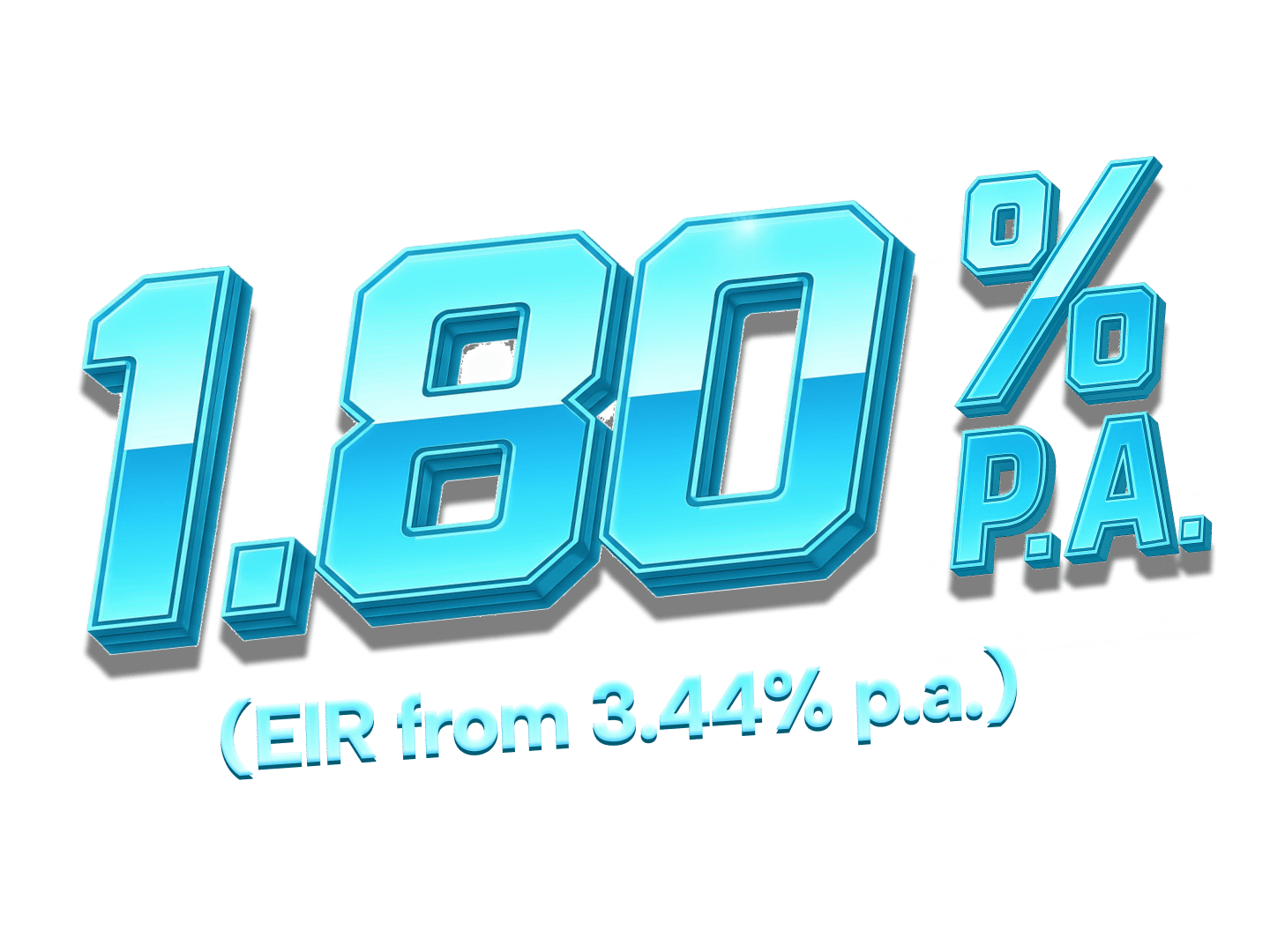How much down payment do you need for your HDB?
Updated: 30 Oct 2025
The amount you will need for a HDB down payment in Singapore varies depending on a few key factors, such as the type of loan you choose, the lender’s requirements, and your personal financial situation.
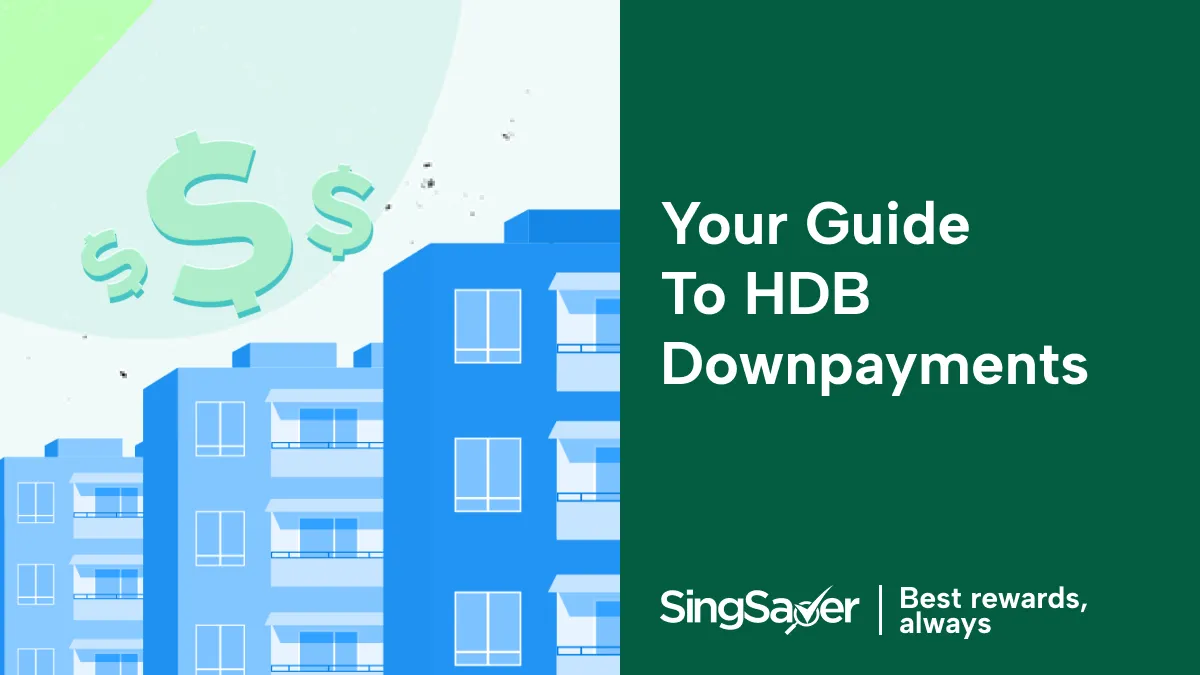
For many prospective homeowners, accumulating enough for a down payment can be one of the most significant challenges in the home-buying journey. If you are purchasing a home for the first time, understanding the process and learning useful tips for first-time home buyers can help you plan your finances more effectively. So, exactly how much should you aim to save? Let’s explore the key factors that influence the amount you'll need to set aside for your HDB home.
Top home loan rates in Singapore - SORA
|
Loan tenor |
First Year interest |
First year monthly instalment |
Three year average interest |
Lock-in period |
|
|
Mortgage Master 3-Month SORA |
30 years |
3.15% |
5.16K |
3.20% |
2 Years |
|
DBS 3-Month SORA |
30 years |
3.05% |
5.09K |
3.05% |
2 Years |
|
OCBC 3-Month SORA |
30 years |
3.05% |
5.09K |
3.13% |
2 Years |
SingSaver Personal Loans Cashback Offer
Enjoy interest rates as low as 1.52% p.a. (EIR from 2.92% p.a.) and up to S$1,900 in cashback when you apply for a personal loan via SingSaver. Valid till 30 November 2025. T&Cs apply.
What is a HDB down payment?
A HDB down payment is the upfront amount you pay before securing a loan for the remaining cost of your flat. It can be paid in cash or through your CPF savings and varies based on your loan type—whether it's an HDB loan or a bank loan. The down payment percentage depends on the property price and lender’s conditions, influencing your overall financing options.
Saver takeaways
-
Flexibility in your down payment: While a larger down payment can lower your loan amount, a smaller one can help you keep cash for other expenses.
-
Consider future expenses: If the home needs renovations, a lower down payment can free up funds for upgrades.
-
Emergency savings matter: Keeping extra cash on hand can be helpful for unexpected costs after moving in.
-
Home improvements can build equity: Upgrades can increase your property's value, potentially helping you reach refinancing goals sooner.
-
PMI isn't permanent: If your home gains enough equity, you may be able to refinance and eliminate private mortgage insurance (PMI).
» Read more on how to save money for a flat before your 35th birthday
Minimum down payments for different HDB flat types
The minimum down payment required for a flat depends on the loan type and the flat you're purchasing. Here's a breakdown of the down payment requirements based on the type of loan you choose.
|
Flat type |
Loan type |
Down payment required |
Payment method |
When to pay |
BTO flats |
HDB loan |
20% of the purchase price |
CPF-OA or Cash |
During the signing of the lease agreement. If on Staggered Downpayment Scheme, 5% during the signing of the lease agreement, 15% during the collection of keys. |
|
Bank loan |
a) 25% (for loans up to 75%)
b) 45% (for loans up to 55%) |
a) Up to 20% CPF. You must pay 5% in cash.
b) Up to 35% CPF. You must pay 10% in cash. |
Check with bank |
|
Resale flats |
HDB loan |
20% of the purchase price |
CPF-OA or Cash |
Using CPF: Upon confirming your financial plan through HDB Resale Portal Cashier’s Order: At resale completion appointment |
|
Bank loan |
a) 25% (for loan up to 75%)
b) 45% (for loan up to 55%) |
a) Up to 20% CPF and 5% in cash.
b) Up to 35% CPF and 10% in cash. |
Check with bank |
|
Executive Condos (EC) |
HDB loan |
Not applicable |
Bank Loan |
HDB loan is not applicable |
|
Bank loan |
a) 25% (for loan up to 75%)
b) 45% (for loan up to 55%) |
a) Up to 20% CPF and 5% in cash.
b) Up to 35% CPF and 10% in cash. |
Check with bank |
Down payment requirements for a HDB loan
BTO Flats with HDB Loan
For BTO flats, the down payment is 20% of the purchase price, which can be paid using your CPF Ordinary Account (CPF-OA), cash, or a combination of both. Typically, this payment is made when signing the Agreement for Lease.
However, if you qualify for the Staggered Downpayment Scheme, you can split the payment into two parts: 5% when signing the lease agreement (around six months after booking the flat) and the remaining 15% when collecting the keys. This option helps ease the upfront financial burden for buyers.
Resale flats with HDB loan
For resale flats, the down payment remains at 20% of the purchase price, and buyers can pay using CPF-OA, cash, or a mix of both.
The key difference lies in the payment process:
-
CPF payments are processed once financial plans are confirmed via the HDB Resale Portal.
-
If you’re paying with cash, you’ll need to submit a Cashier’s Order during the resale completion appointment.
Executive Condominiums (EC) with HDB loan
If you're purchasing an Executive Condominium (EC), you cannot take an HDB loan and will need to secure a bank loan instead. The down payment requirements for bank loans differ and will be covered in the next section.
Down payment requirements for a bank loan
BTO flats with bank loan
For BTO flats with a bank loan, the down payment can range from 25% to 45% of the purchase price, depending on the loan amount.
-
If your loan is up to 75% of the purchase price, you will need to pay 25% as a down payment.
-
If your loan is up to 55% of the purchase price, you will need to pay 45% as a down payment.
This remainder is paid when you collect your keys, and you can use your CPF, cash, or a combination of the two.
Resale flats with bank loan
The down payment for purchasing a resale flat with a bank loan can be quite substantial, ranging from 25% to 45% of the purchase price.
Fortunately, much of the down payment can be covered using your CPF-OA balance.
-
If your bank loan covers up to 75% of the purchase price, you will need a 25% down payment. At least 5% must be paid in cash, with the remainder covered by your CPF-OA.
-
If your bank loan is up to 55% of the purchase price, the down payment increases to 45%. In this case, at least 10% must be paid in cash, with the remaining 35% coming from your CPF savings.
These payment structures ensure flexibility, allowing you to use both cash and CPF to manage the down payment when purchasing a resale flat.
» Find out about how much you can borrow for your home loan in Singapore
Factors that affect your HDB down payment
When you're considering purchasing an HDB flat, several factors will influence the down payment you need to make. Here’s a breakdown of what to expect:
Type of loan
-
HDB loan: Requires a 20% down payment for all flat types (BTO, resale).
-
Bank loan: Offers lower down payments of 25% for loans up to 75%, but a higher downpayment of 45% for loans up to 55%.
-
No loan options: For ECs, HDB loans are not applicable, and you’ll have to use a bank loan.
Using CPF for your HDB down payment
One of the advantages of buying a flat in Singapore is the option to use your CPF Ordinary Account (CPF-OA) to pay for your down payment.
-
CPF-OA can be used to pay for most of the down payment, reducing the cash amount you need to pay.
-
For BTO and resale flats: You can use up to 100% of the down payment with CPF funds, subject to CPF savings limits.
Staggered Downpayment Scheme (SDS)
If you're purchasing a BTO flat, you may benefit from the Staggered Downpayment Scheme, which allows you to pay your down payment in two stages:
-
Pay 5% at the signing of the lease agreement and 15% when collecting your keys.
-
Applies to BTO flats only and allows a split payment, reducing the immediate financial burden.
This scheme helps ease the immediate financial burden of the full down payment, spreading it out over a longer period.
Property type (BTO, Resale, EC)
The type of flat you choose will also impact your down payment:
-
BTO: 20% down payment, can be paid using CPF.
-
Resale: Also 20% downpayment, CPF allowed, but cashier’s order for cash payments.
-
EC: No HDB loans allowed; bank loan downpayment varies from 25% to 45%.
Government schemes and assistance
If you’re a first-time homebuyer, you may be eligible for various government assistance schemes that help reduce your down payment. These programmes are designed to make homeownership more accessible, so it’s worth checking if you qualify for any assistance before proceeding with your purchase.
How much can you borrow for your HDB loan?
The amount you can borrow for your HDB flat is mainly determined by the Loan-to-Value (LTV) ratio, which reflects the percentage of the flat’s purchase price or valuation that the bank or HDB is willing to lend you. Currently, the LTV for HDB loans is capped at 80%, meaning you'll need to pay at least 20% of the purchase price from your own funds (either in CPF or cash).
Several other factors also influence the loan amount you can qualify for:
-
Financial profile: This includes your income level, employment stability, and creditworthiness.
-
Credit score: A higher score typically improves your borrowing capacity.
-
Existing debts: If you have other outstanding loans, including housing loans, it may reduce the amount you can borrow.
Additionally, the maximum loan ceiling is influenced by the loan tenure (the repayment period). The longer the tenure, the more you may be able to borrow, but if you have more than one housing loan, this could lower the loan amount you qualify for.
Evaluating these factors is crucial to understanding how much you can borrow and ensuring your loan is manageable in line with your financial commitments.
⚡SingSaver x Trust Personal Loan Flash Deal⚡
Enjoy low interest rates from 1.56% p.a. (EIR from 3.00% p.a.) plus up to S$1,750 in cashback and rewards when you sign up for Trust Bank Personal Loan via SingSaver. Plus, receive a S$10 FairPrice E-Voucher from Trust when you sign up with the referral code SINGSAVE. Valid till 30 November 2025. T&Cs apply.
Know your monthly repayments before you borrow
Planning to take out a loan? Learn how to calculate your repayments so you can budget confidently and avoid surprises.
Benefits of a larger downpayment for your HDB
Making a larger down payment on your home offers several advantages:
-
More equity in your home right away: A larger down payment means you own a bigger share of your property from the start, giving you more home equity and security.
-
Lower monthly mortgage payment: The higher your down payment, the smaller your loan amount. This results in lower monthly mortgage payments, which can ease your financial burden.
When do you need to pay your HDB down payment?
Now that you know the downpayment amounts for different HDB flats and scenarios, you may be wondering when exactly you need to pay it.
|
Flat type |
Housing loan type |
When to pay down payment? |
|
BTO flats |
HDB loan |
During signing of lease agreement. If on Staggered Downpayment Scheme, 5% during signing of lease agreement, 5% during collection of keys. |
|
Resale flats |
HDB loan |
Using CPF: Upon confirming your financial plan through HDB Resale Portal Cashier’s Order: At resale completion appointment |
|
BTO, resale or EC |
Bank loan |
Check with your bank on the payment schedule |
Exploring CPF usage for your HDB down payment
The Central Provident Fund (CPF) is an essential tool for home financing in Singapore, especially for your down payment. Here’s how you can make use of your CPF savings:
Using CPF for down payment
HDB housing loan
-
Downpayment: At least 25% of the purchase price, which can be paid in full using your CPF Ordinary Account (OA), with cash, or a combination of both.
-
Maximum loan amount: Up to 75% of the purchase price for new flats. For resale flats, it is 75% of the resale price or market valuation (whichever is lower).
-
Use of OA savings: You must use the available savings in your OA for the purchase of the flat before an HDB housing loan is granted for the remaining amount.
Bank housing loan
-
Downpayment: 25% of the purchase price, with 5% payable in cash and the remaining 20% payable in cash or your CPF OA savings.
-
Maximum loan amount: Up to 75% of bank valuation or purchase price (whichever is lower).
-
Use of OA savings: You can set aside any amount of CPF and pay your bank housing loan with cash instead.
First-time buyer incentives
If you’re a first-time homebuyer, you can take advantage of several incentives to make your home purchase more affordable:
1. First-Timer Priority Scheme
Priority schemes enhance your chances in the computer ballot for flats offered in the Build-To-Order (BTO) and Sale of Balance Flats (SBF) exercises. You may apply for 1 priority scheme to enhance your chances in the ballot, if your household meet the eligibility conditions at the point of your HFE letter application.
2. Enhanced CPF Housing Grant (EHG)
Up to $80,000 for eligible first-timer families and up to $40,000 for singles, depending on their income and the extent to which the lease of their purchased flat can last them till 95 years old. This is given on top of the CPF Housing Grant
3. Proximity Housing Grant (PHG)
If you’re buying a flat to live near your parents or children, you can receive up to S$30,000 if you purchase a resale flat in close proximity to them.
» Read on to find out how much you need to buy your first home in Singapore
⚡SingSaver x SCB CashOne Personal Loan Flash Deal⚡
Experience the lowest interest rates from 1.80% p.a. (EIR from 3.44% p.a.) in the market, plus up to S$1,700 in Cashback when you apply for Standard Chartered CashOne Personal Loan via SingSaver. Valid till 30 November 2025. T&Cs apply.
